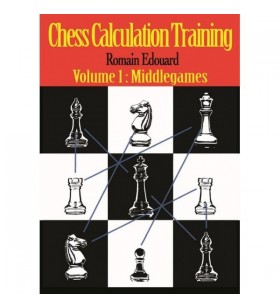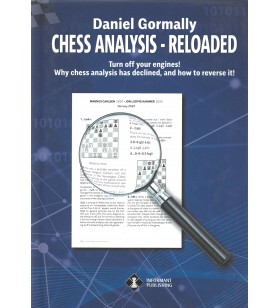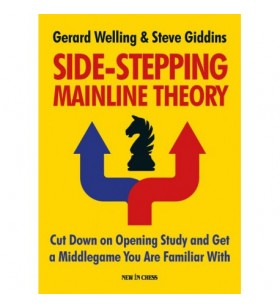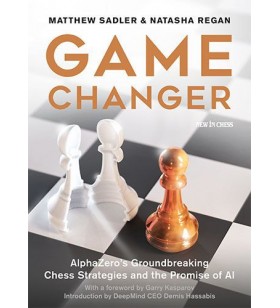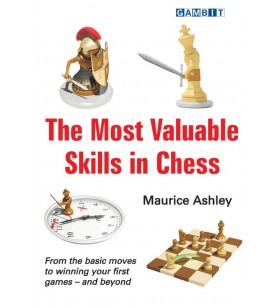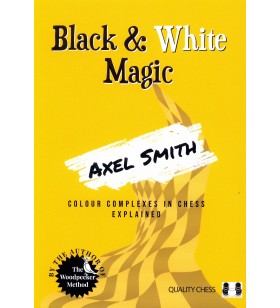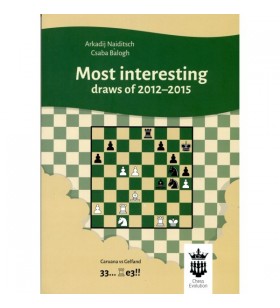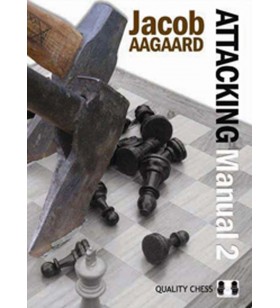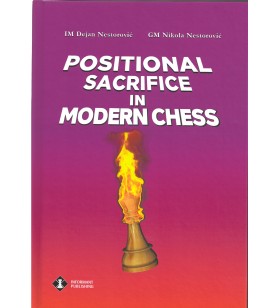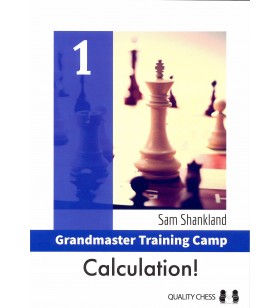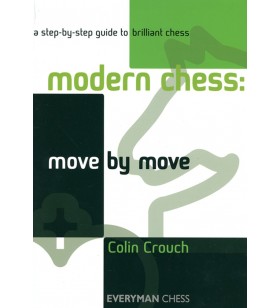- CHESS
- Chess boards and pieces
- Chess books
- Chess books in English and others
- Opening books
- The Ruy Lopez
- Other open games
- Other semi-open games
- The Sicilian
- French Defence
- Pirc & Modern Defence
- Caro-Kann
- Queen´s Gambit
- Slav Defence & Semi-Slav
- Other closed games
- Other semi-closed games
- King´s Indian Defence
- Nimzo & Queen´s Indian
- Grünfeld
- English Opening
- Dutch Defence
- Miscellaneous openings
- General and repertoire books
- Endgame books
- Books on grandmasters
- Books on tournaments
- Books in Dutch
- Miscellaneous
- Chess magazines
- General and middle game books
- Opening books
- Chess books in French language
- Chess books in English and others
- Chess software and DVDs
- Chess computers
- Equipment for clubs
- BOARD & BRAIN GAMES
- GO
- BRIDGE & CARDS & TAROT
- POKER & CASINO GAMES
- PUZZLES & BRAIN TEASERS
- DARTS
DUNNINGTON - Gambit Play
 Livraison sous 48 heures via Bpost*
Livraison sous 48 heures via Bpost*
Livraison gratuite à partir de €69 (Belgique, France, Pays-Bas, Luxembourg, Allemagne)
 You can cancel your order
You can cancel your order
For fourteen days!
 Secure payments
Secure payments
All payment cards accepted.
16 other product
Gormally - Chess Analysis - Reloaded
Danny Gormally is a Chess Grandmaster stuck in a fugue state. He has forgotten how to analyse - blinded by the brilliance of chess engines, every time he gets stuck he turns on the machine. In this book he attempts to discover his love of analysis and the game of chess by attempting different methods of analysis and calculation. He asks what separates the analysis methods of an amateur player with a Grandmaster, and further still what separates the very best players from super computers. It all culminates in the mind-bogglingly complex “Impossible quiz” where some of the most skilled players in chess are confronted by extremely complex positions.
If that sounds off-putting it shouldn’t be - Gormally breaks down the material in a way that is comprehensible to any amateur player. 262 pages
Smith - Black & White Magic
During his long journey as a chess player and coach, GM Axel Smith came to the realization that understanding colour-complex strategies is one of the key differences between strong and weak players. After many years of delivering lectures and training material to his students, Smith produced a Chessable course on the topic, which has been extensively edited and reorganized by Quality Chess to produce this book.
In these pages, the award-winning author breaks down colour complexes into various sub-topics such as blockades, opposite-coloured bishops and exchange sacrifices, with carefully chosen exercises to test and reinforce the reader’s newfound understanding. Use Black & White Magic to improve your chess strength!
GM Axel Smith is the award-winning author of The Woodpecker Method, Pump Up Your Rating, e3 Poison and Street Smart Chess, which were all enthusiastically received by readers and reviewers. Using the Woodpecker as part of his training, as an adult he improved from a rating of 2100 to becoming a Grandmaster. 264 pages
WATSON - Chess Strategy in Action
Nestorovic - Positional sacrifice in modern chess
Positional Sacrifice in Modern Chess (hardcover). A Word from the Authors : "The sequel, or the second part of the “Secrets of Positional Sacrifice” manual is titled “Positional Sacrifice in Modern Chess”. We assume that readers will conclude that the subject of our analysis are recently played games, especially the games played over the last few years. The book is intended for chess players who aspire to raise the level of positional play in this particular field of expertise, as well as coaches working on chess education. Like the previous book “Secrets of Positional Sacrifice”, the book in our hands is divided into chapters according to the material that is the subject of the sacrifice: the positional sacrifice of a pawn, exchange, piece, rook, and queen. Finally, the last chapter deals with “hot games” and contains six games played during November and December 2021. We believe that the book is as interesting and instructive as its prequel. However, the examples are a tad more complicated, primarily because of the positional rook sacrifice section. In actual fact, the examples on this kind were verydifficult to find in practice, and processing them in the right way was a particular challenge for us. The first section, the positional pawn sacrifice, should encourage the reader to execute one of the most complicated positional sacrifices in practice as often as possible. On the other hand, the sacrifice of exchange is the most common and easiest to apply and can very successfully serve as a means of relieving the fear of possible sacrifice of material. Asymmetric positions, i.e., positions with an unusual distribution of material, are mostly featured in the positional piece and queen sacrifice positions. In the last chapter entitled “Hot Games,” we present the analysis on the topics of various fascinating examples, from the latest games of today’s great players. We tried to choose the examples that were easy to follow, so they are embellished with diagrams and explained verbally as well. We paid more attention to the analysis of the positional sacrifice from the moment of its execution to the end of the game. Hence, the introductory part of each example may be somewhat shorter in relation to the first book. Finally, the invaluable exercises at the end of the book should be mentioned. The tasks cover four topics to make them as interesting and easy to solve as possible. The exercises are based on the correct assessment of asymmetric positions and, of course, on concrete calculations. In conclusion, we would like to emphasize that the book highlights the beauty of human ideas and their practical application. In some cases, the authors give preference to the human idea over the assessment of the computer. When a player cannot calculate complicated lines accurately, he should look for an alternative solution of the similar quality. One of the possible answers is the positional sacrifice that leads to asymmetric material and thus the change of the character of the fight. " 307 pages
CROUCH - Modern Chess: Move by Move
Encore un livre sur le principe “move by move”, créé jadis par Chernev.et repris ensuite par Nunn, McDonald et quelques moindres. C'est ici l'auteur de How to defend in chess et Great Attackers qui s'y colle, avec un certain bonheur - même s'il n'a pu éviter les redites et enfonçages de portes ouvertes qui sont la loi du genre. Reste que les joueurs de tous niveaux trouveront agrément et profit à découvrir ces 33 parties ultra-récentes (2005-08) commentées en (grand) détail.

 Français
Français Nederlands
Nederlands English
English
